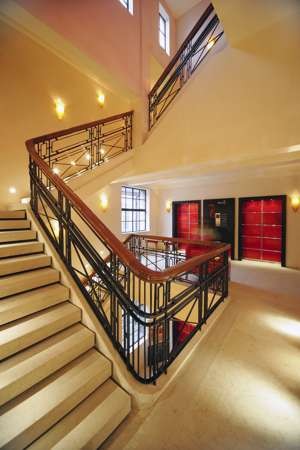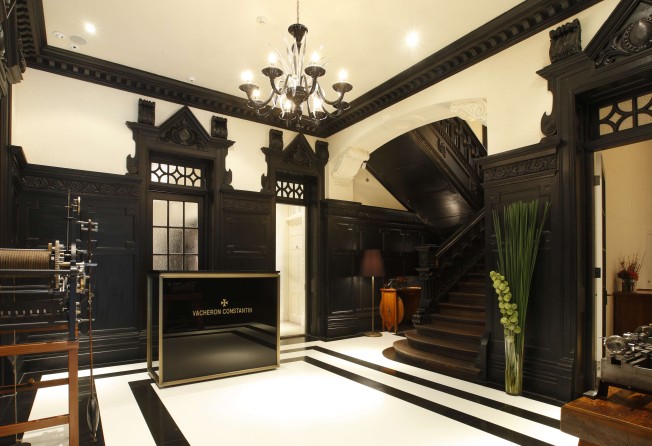
Bringing Shanghai’s historic industrial heart back to life
Leading renovation firm mixes old with new, ‘in a way that is respectful’

Old buildings should feel old. That’s one of the guiding principles behind Shanghai-based Kokaistudios, whose practice relies heavily on renovations and historic conservation projects.
“We try not to touch it up too much,” says the firm’s co-founder, Andrea Destafanis.
Kokai’s latest project is the Xintai Warehouse, a century-old brick structure near Suzhou Creek, a historic industrial area in the centre of Shanghai.
When a chemical company asked them to renovated the building for its headquarters, the architects kept the original wooden floors, columns and ceiling beams rough and unvarnished. The floors are slightly crooked, a reminder that Shanghai is slowly sinking into the mud flats on which it is built.
New interventions are subtle, like skylights that were cut into the pitched roof to flood the top floors with natural light. “You try to put your fingerprints on a building, but in a way that is respectful,” says Kokai’s other founding partner, Filippo Gabbiani.
That’s something Gabbiani and Destafanis learned in their native Italy, a country with no shortage of experience in dealing with old structures.
Destafanis is originally from Turin, while Gabbiani is a native of Venice, which is where they began their practice after meeting at the Università Iuav di Venezia.
In 2002, they won a bid to transform the 1920s-era Chartered Bank Building on Shanghai’s historic Bund into a shopping and entertainment complex called Bund 18.
The structure is one of a large collection of neoclassical banks and trading houses built by Europeans in the 19th and early 20th centuries on the Bund, a curving embankment along the west shore of the Huangpu River. Many of the buildings had been neglected for decades.
“They were ashamed of them,” says Gabbiani.

Gabbiani says their starting point is to “reconnect things that have become disconnected.”
That means restoring historic materials to their original glory, like stripping away shotcrete plaster and restoring it with traditional Shanghainese plaster, but also building a bridge between old and new.
At Huaihai 796, they turned an abandoned concrete structure that had been built behind the historic villas into an office building whose understated charcoal façade plays off the villas’ neoclassical ornamentation.
In Xintai’s case, they demolished a concrete structure that connected the two wings of the building and replaced it with a glass atrium that showcases the structure’s original brickwork.
Not all of Kokaistudios’ renovation projects involve historic buildings.
The first problem of a shopping mall is that it’s conceived like a mousetrap, a big box with a little holes. It doesn’t have a good urban relationship with what’s around it.
On Wuyuan Lu in the former French Concession, they were hired to transform an unremarkable 1970s-era concrete housing block into upscale flats. They painted the building charcoal grey and installed a series of warm-toned wood louvres that climb the façade and provide a sunshade on a communal rooftop garden.
They also transformed an underused 1990s-era shopping centre at the base of the New World Tower into the K11 Art Mall.
“The first problem of a shopping mall is that it’s conceived like a mousetrap, a big box with a little hole,” says Gabbiani. “It doesn’t have a good urban relationship with what’s around it.”
Kokaistudios’ solution was to cut a large circular courtyard out of the existing mall, creating a public space that opens onto busy Huaihai Lu. A curvaceous glass skylight brings sunlight into the mall’s basement floors.
Destafanis says New World’s deep pockets made such an ambitious project possible, but such well-to-do clients are becoming more scarce owing to China’s economic slowdown.
But the architects don’t seem particularly concerned. Just the opposite, in fact.
Gabbiani says lean times will encourage more thoughtful projects instead of speculative get-rich-quick schemes. He thinks there will be more appetite for renovations and restorations, too, as developers make better use of what already exists.
“Everyone was terrified of the bubble going burst,” says Gabbiani. “Today, whatever they spend, they need to spend it wisely.”